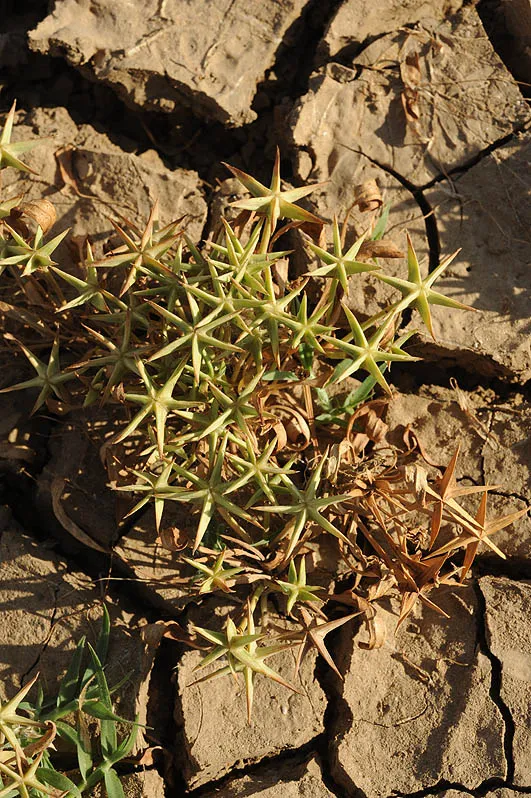Leafless Bean Tree, Yasar Tree
Moringa peregrina
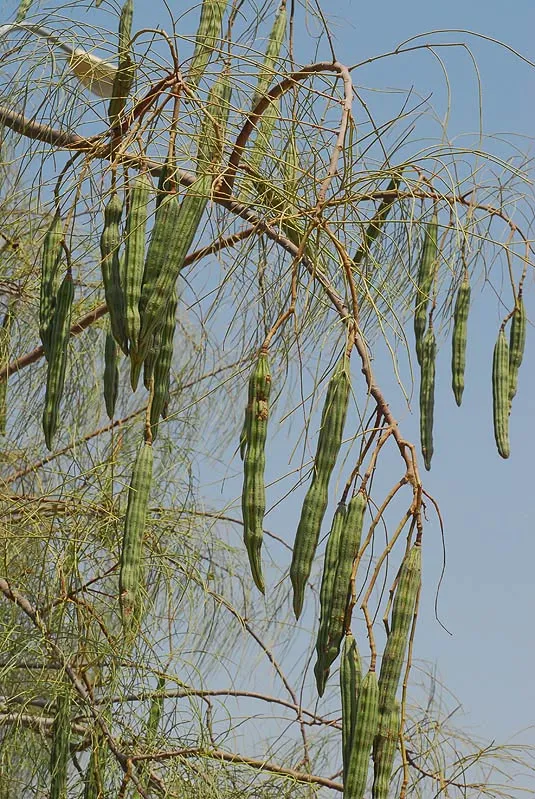
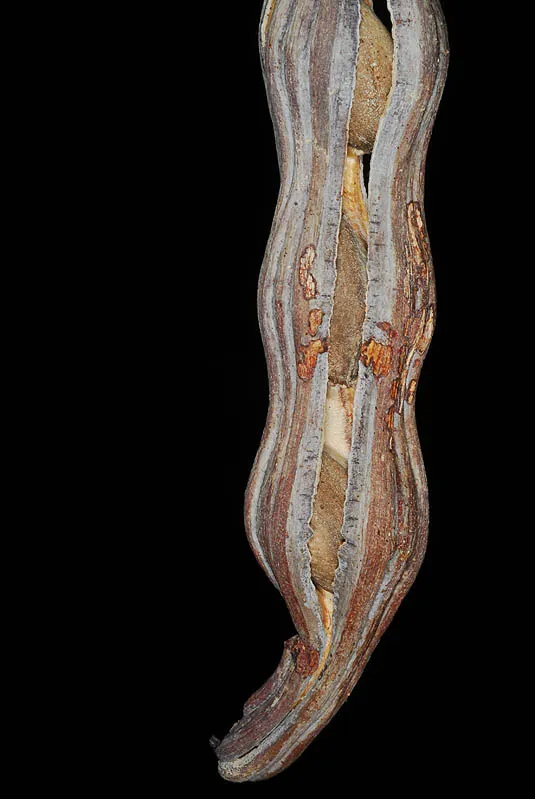
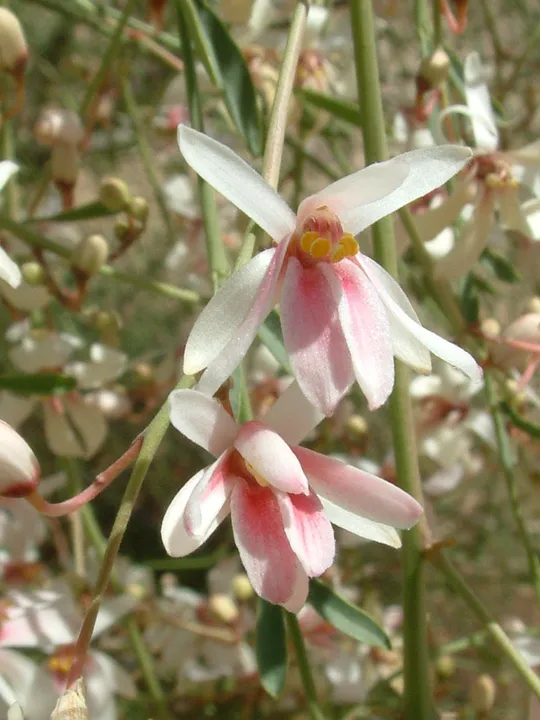
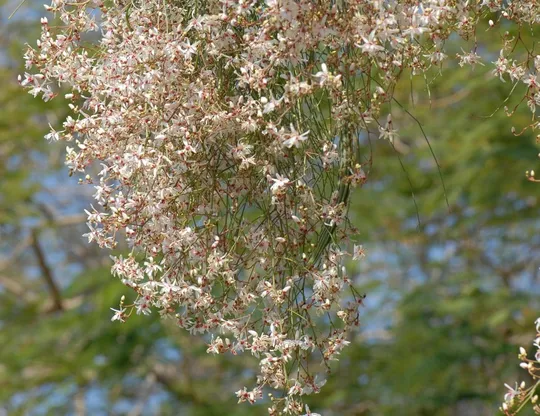
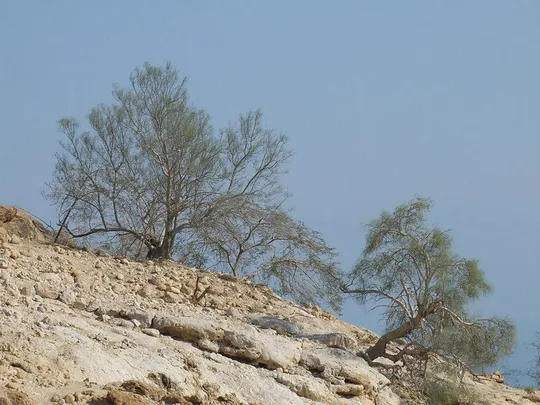
Moringa peregrina has a disjunct
distribution in Israel and grows mainly in the Jordan Valley regions and nearby,
in the Dead Sea area, Judean Desert, Kinarot Valley, Elat Mountains and the
Arava, at 14 sites far apart from each other. There are estimates that it is
found at some 20 sites in Israel. In the Dead Sea area, it grows along cliffs
and springs, particularly at En Gedi and between Enot Kane to Mitspe Shalem. It
is also found in Wadi Kana'im, Wadi Tse'elim and Wadi Zohar. In the lower
section of the Judean Desert, north of the Dead Sea, it appears in Wadi Prat
(Wadi Qelt). From there is a large geographical gap until its northernmost site
in Hamat Gader in the Kinarot Valley. In the Arava (where it borders on the
northern Negev) there is a single M. peregrina tree in Wadi Gov near Ma’ale Akrabim.
In the Elat Mountains there is a large specimen in Wadi Gishron, which is not
in Israeli territory. Young shoots are found on the Israeli side of the wadi as
well.
There are giant
concentrations of M. peregrina in Wadi Mi'ar in Sinai and in Wadi Ghuweir near
Funon in Jordan.
Rocky slopes at
the edges of ephemeral streams and canyons, in hot deserts. In the Dead Sea and
En Gedi regions M. peregrina grows at the foot of the cliffs and
"indicates" the En Gedi springs aquiclude (the impermeable rock layer
that confines groundwater). The tree grows on a variety of substrates:
limestone, sandstone, basalt, granite and dark metamorphic rocks.
The
Moringaceae family is a relict tropical family close to the family Capparaceae
and located between the Brassicaceae (similar fruits and chemical substances)
and Fabaceae (similar flower structure).
The
genus Moringa is the only one in the Moringaceae family and has 14
species characteristic of the East African savannas to the deserts of India. The
diversity center of the genus in the Horn of Africa (Somalia), where seven
species grow. One species grows in West Africa, two species grow in Madagascar
and two species grow in India.
The
species that grows in Israel is the only one that crosses the Sahara to the
north. Its range reaches the edge of the Mediterranean region and it is the most
adapted to dry conditions.
·
The number of
regions and the site locations where Moringa peregrina grows is stable and
has not changed during the last 100 years.
·
There is little
verified data regarding the numbers of trees at each site and there is no formal
demographic evaluation of the M. peregrina population status. Nevertheless,
the drying trend in oases in recent years (e.g. En Gedi) and the decrease in floods
and their intensity in the wadis – is expressed by partial drying and death of
branches.
·
The main threat factors
result from the risk of drying up because of the continuing drought.
·
M. peregrina
is part of a successful rehabilitation program of Sudanian shrubs and plants
through gardening, in the Dead Sea region, which has been ongoing for 15 years
(Belcher, 2010).
·
M. peregrina
is protected in Israel by virtue of being a tree. The declared nature reserves in
which it grows are the En Gedi and Wadi Prat reserves. In Hamat Gader it grows
within the boundaries of the national park but is not protected.
·
M. peregrina
has a broad global distribution and apparently is not globally endangered. It is
classified, however, as "vulnerable" (VU) in the list of threatened
species in Egypt.
A regular water supply should be maintained in existing
reserves. The program to plant Moringa peregrina in settlements in the Dead
Sea and Arava regions should continue (Belcher, 2010), with care to use trees
from known sources, e.g. the existing population of En Gedi. The northernmost
spot where M. peregrina grows, Hamat Gader, should be fostered and
declared a reserve. The population in Wadi Gishron should be maintained as well.
Moringa peregrina is a Sudanian species,
whose distribution extends from northern Kenya to the southern Arabian
Peninsula. In northeast Africa, the species is found in southern Egypt, Sudan,
Eritrea and Somalia. In the Red Sea and the Gulf of Elat, M.
peregrina is found in oases and canyons, and in Southern
Sinai and in Jordan, it is common in hot and black (black granite) canyons, not
necessarily near springs.
Moringa peregrina is a Sudanian tree
characteristic of oases and hot wadis with a disjunct distribution in Israel. Israel
is the northern limit of its geographic distribution. Its conservation
importance is a result of its rarity and peripherality.
בלכר מ. 2010. המשימה: השבת עצי עין גדי. בשביל הארץ, 36: 26-28.
שמידע, א. ואור, י.1983. הצמחייה הסודנית בישראל – מורינגה רותמית. רתם 8: 76-78.
Current Occupancy Map
| 1000 squre meter pixel | 5000 squre meter pixel | 10000 squre meter pixel | |
|---|---|---|---|
| number of observations | 0 | 0 | 0 |
| in total pixels | 0 | 0 | 0 |
| Family | Moringaceae |
| Classification | On the endangered species list |
| Ecosystem | Desert |
| Chorotype | Eastern Sudanian |
| Conservation Site | Wadi Arugot |
| Rarity |
1
1
6
|
|---|---|
| Vulnerability |
0
2
4
|
| Attractiveness |
0
2
4
|
| Endemism |
0
0
4
|
| Red number |
1
3.2
10
|
| Peripherality | S |
| IUCN category | DD EW EX LC CR EN VU NT |
| Threat Definition according to the red book | Vulnerable |
 Based on:
Based on:



